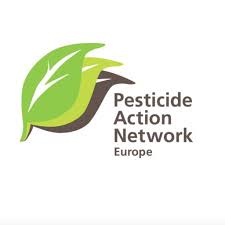Chemycal has been acquired by 3E
Learn MoreChemycal has been acquired by 3E
Learn MoreDiscover how Chemycal PRO helps you boosting your regulatory monitoring:

(Brussels, 20 October 2017) Last week, the French tribunal of Foix sent 4 prejudicial questions to the European Court of Justice, regarding the lack of reliability of the current EU pesticide risk assessment. This is a very timely event as the glyphosate debates raise identical issues. The answers from the European Court of Justice might lead to a major improvement of the safety of citizens and the environment in the EU.
On October 12, in the framework of a court case on civil disobedience from French “faucheurs volontaires” (voluntary reapers), the Tribunal of the Pyrenean city of Foix (France) sent 4 prejudicial questions to the European Court of Justice[1]. The activists destroyed Roundup (glyphosate) containers in a local shop and defend themselves on the base that the current pesticide risk assessment is not efficient to protect human health and the environment. The activists’ lawyer proposed to the Court to send these questions to the EU Court, this request was supported by the public ministry. These 4 questions sent by the judge to Luxembourg address fundamental flaws in the current risk assessment of pesticides. PAN Europe has repeatedly stressed out that the pesticide risk assessment procedure is highly problematic resulting in the authorization of dangerous chemicals that are then applied on open fields and end up as residues in our food. But the decision makers tend to protect agribusiness rather than citizens’ health and the environment. They continuously resist to substantially improving the assessment procedure, which would inevitably result in the removal of a series of pesticides from the market. The questions, asked in light of the precautionary principle laid down in the Rome treaty, concern the following facts:
Martin Dermine from PAN Europe adds: ‘This is the absurdity of our regulatory system: an active ingredient is tested for its cancer potential but not the product that includes ingredients that may in fact, enhance the toxicity of the active ingredient. Studies that show that the product causes toxicity are actually excluded by norm by regulators. This is at the heart of the glyphosate dispute: the International Agency for Research on Cancer of World Health Organisation declared glyphosate a probable carcinogen by taking into account the studies on the complete product formulation. In EU however, EFSA assessed the health risks only of the active ingredient discarding all studies done on the formulation, even though this is exactly what people are exposed to. ’.
CONTINUE READING ON www.pan-europe.info
2013 © MyChemicalMonitoring. ALL Rights Reserved. About Us | Terms and Conditions